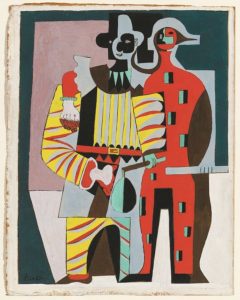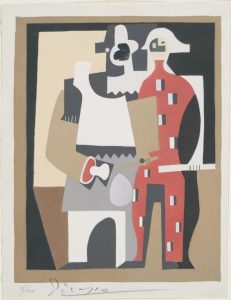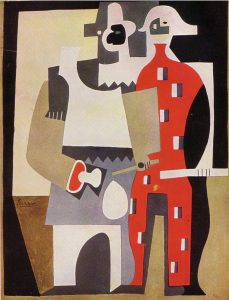Q: I have been reading your blog re Picasso and his prints. You say that Picasso didn’t use pochoir, but I have read on other websites that he actually made 200 of them. Who is correct? -Sue G
A: I can see why you would find this confusing, especially because that fancy French term sounds so very artsy. But pochoir (French for “stencil”) is a reproductive technique, so of course Picasso didn’t use it to create art. Picasso made original art. Other people reproduced some of his artworks using the pochoir technique, and at times he signed these reproductions by hand—for a fee. Although these are by no means original artworks, they do have decorative value (though nothing like the beauty of the original art on which they were based), and they also have some monetary value in today’s market (though, again, nothing like their original precedents), not uncommonly reaching even the low five digits.
As an aside, pochoirs and other forms of reproduction have very little personal appeal, and I would not consider acquiring them. There are too many original Picasso artworks to be had for the same money, though one would often be foregoing brightly colored reproductions for black-and-white original prints. But if colored Picassos are what you want with no regard for originality, why not buy a poster and keep the change? You could even call your acquisition an affiche, French for poster. Sounds more valuable already, doesn’t it?
For a somewhat broader discussion, see the relevant parts of the “Collecting Pitfalls” chapter in my guide to collecting Picasso prints: https://ledorfineart.com/Chapter_13.html.
But first, a little pop quiz: Which one of these does not belong? Below are examples of two original Picasso gouaches of 1920 entitled Pierrot et Arlequin and a pochoir reproduction. Can you pick out the originals?


